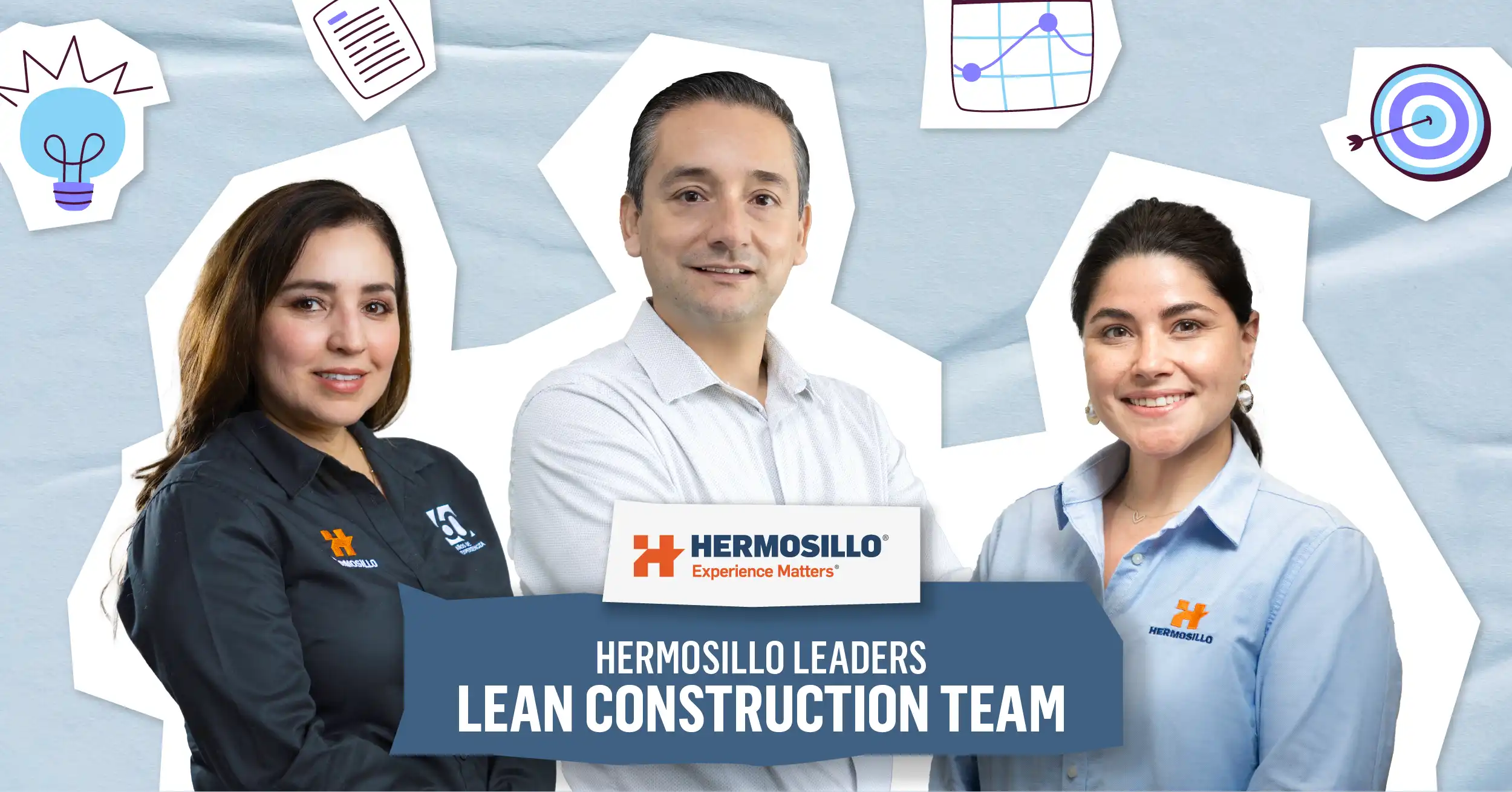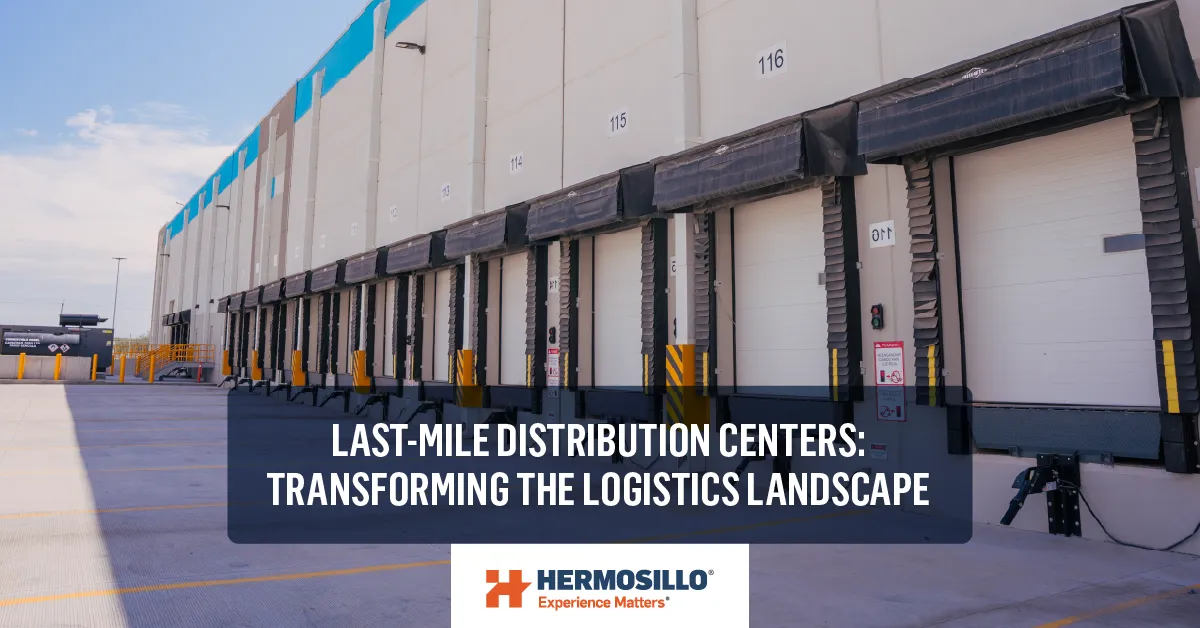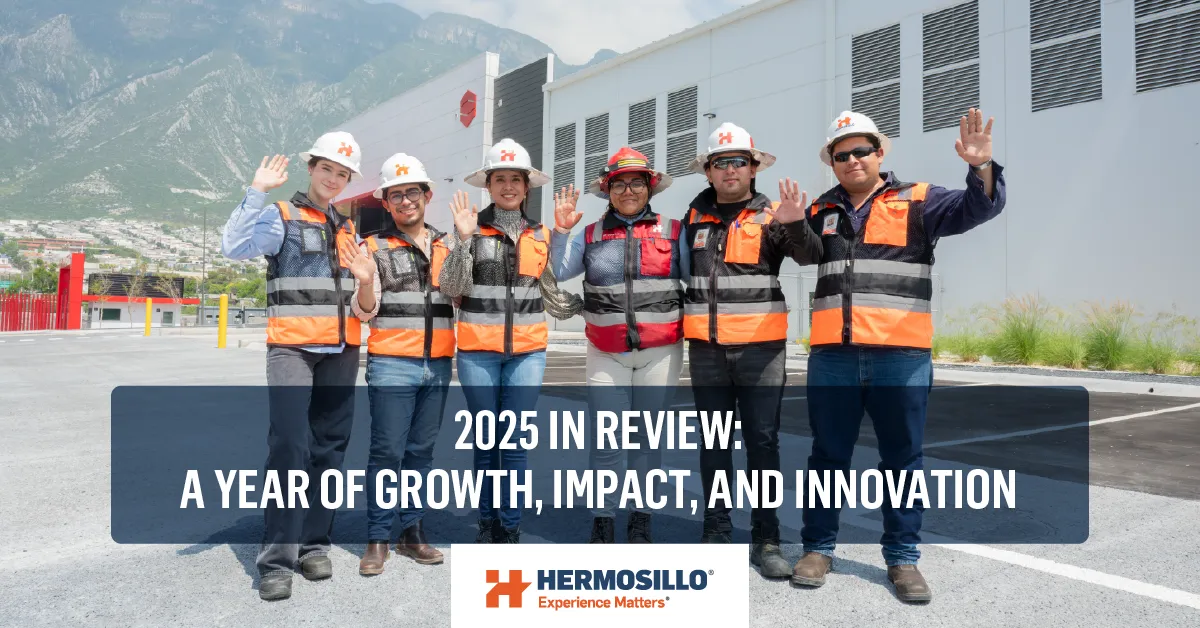
Planning better, reducing waste, and optimizing results—the Lean Construction team is behind many decisions that ensure each project moves forward with clarity and efficiency. Their strategic role strengthens processes, improves cross-functional communication, and generates real value.
Learn more about their impact on and off the jobsite.
1. What is the main role of the Lean Construction team in Hermosillo’s projects and processes?
Adriana: At Hermosillo, implementing Lean Construction—combined with a solid risk and process management system—plays a strategic and complementary role. This synergy allows us to achieve greater operational efficiency, ensure quality, meet project deadlines, and improve profitability.
- Reduced unforeseen issues and conflicts
- Increased jobsite safety
- Better financial planning
- More predictable and controlled projects
Cesar: Our primary role is to support project teams by implementing Lean tools that enable work to be carried out more efficiently, collaboratively, and with higher quality.
Melissa: At Hermosillo, the Lean Construction team plays a strategic role as a driver of continuous improvement. Our purpose is clear: to increase value for the client and reduce waste at every project stage. This not only means controlling timelines and optimizing operational processes, but also fostering a culture of collaboration and high team performance.
We promote a management approach aligned with the highest standards of excellence through tools and frameworks such as the Last Planner System, Value Stream Mapping (VSM), and Target Value Delivery. But beyond the technical aspect, our mission is to accompany each project through its evolution, ensuring that every new build is managed better than before. We learn, build, and act as change agents who promote a culture focused on delivering real value.
2. How do they contribute to improving the outcomes of the projects?
Adriana: Process and risk management, along with the implementation of Lean Construction, directly translate into better outcomes for our projects. By working with unified standards, we achieve more consistent execution across teams. In addition, rework and quality errors are significantly reduced, resulting in substantial savings in time and resources.
Productivity also increases by eliminating unnecessary tasks and optimizing workflow. And thanks to clear and effective processes, best practices can be replicated in future projects, strengthening continuous organizational improvement.
Cesar: Achieving the expected outcomes in a construction project requires thorough coordination among multiple teams throughout all process phases. This means that each participant must have timely access to the information needed for their work and the opportunity to contribute ideas that enhance collaboration.
One of our main focuses is eliminating the eight common types of waste in any productive activity: defects, unnecessary movement, overproduction, excess inventory, overprocessing, underutilized talent, transportation, and waiting time. By implementing Lean tools that help prevent this waste, we can optimize the three key outcomes of every project: time, quality, and cost.
Melissa: Improving project outcomes is not just a goal—it is the purpose guiding our work as a Lean team. We focused on delivering more efficiently from the beginning: We anticipate risks, reduce waste, and avoid unnecessary costs. We ensure that every decision is aligned with what the client truly values, enabling more reliable deliveries and more agile processes.
In recent years, we’ve broadened our perspective. Today, we understand that the experience throughout the project is just as significant as the final result. At Hermosillo, we believe that experience also generates value. That’s why we work to make processes more straightforward, human, and sustainable. We focus on supporting our teams, encouraging their growth, and fostering a culture where people can develop while building high-impact projects. In doing so, we don’t just transform buildings—we transform how we live and work in the construction industry.
3. How do you collaborate with other areas to apply Lean principles at every project stage?
Adriana: The Lean, Risk, and Process team is part of an integrated management system that connects all functional areas at Hermosillo and strengthens organizational development. This systemic approach enables departments such as budgeting, procurement, design, planning, and construction to align under a shared vision—leveraging common objectives, data, and operational standards.
Well-defined processes ensure each area understands its role, deliverables, and connection points with other functions. Risk management, in turn, helps anticipate obstacles or deviations at every stage, safeguarding project continuity.
Lean Construction complements this system with a practical methodology focused on identifying waste, fostering collaboration, and delivering value to the client, beyond simply meeting deadlines or budgets. These three disciplines are key to achieving successful projects, satisfied clients, and a sustainable company.
Cesar: Being Lean is not just about applying tools to a project — it means the entire organization embraces Lean as a way of working. It’s neither real nor sustainable to claim that a single project follows “Lean Construction” if the organization doesn’t follow its principles.
The Lean philosophy is built on fundamental principles: respect for people, focus on delivering customer value, creation of continuous workflow, pull-based process design, and a constant pursuit of improvement. That’s why our role as a Lean team goes beyond individual projects — we support all areas of the company: from budgeting, design, procurement, and construction to finance, human resources, and IT. Every department must live by the Lean values. Tools may vary depending on the function, but the principles must be shared and consistently applied.
Melissa: Collaboration with other areas is an essential part of our work. We are actively involved from the early stages of each project, ensuring that Lean principles are known and lived.
During preconstruction, we collaborate with design and procurement teams using agile frameworks like Scrum, which allow us to plan more dynamically and iteratively. This helps align deliverables with the client’s real needs, enables early adjustments, and reduces rework.
We also conduct continuous improvement analyses using tools like Value Stream Mapping (VSM), which help identify bottlenecks and opportunities for greater efficiency in workflow processes.
On-site, our role becomes even more critical: we are part of the operations team, supporting schedule control, monitoring technical and cultural performance indicators, and promoting an active culture of continuous improvement. Through collaborative dynamics, we help build high-performing teams with a shared purpose.
Finally, each project closes with lessons learned sessions, where we analyze what was experienced to improve and share it. This reflection is at the heart of our evolution as a company and ensures that every experience contributes to Hermosillo’s collective learning.
4. Which Lean practices have most significantly transformed how we plan and execute projects?
Adriana: The Lean practice with the greatest impact on our organization has been a new way of planning and tracking projects, using the Last Planner System, Pull sessions, and other tools that improve visualization, coordination, and fulfillment of commitments. This has optimized operations and strengthened decision-making.
But the most significant change has been cultural: today, we have more collaborative, committed, and focused teams on continuous improvement, which has fostered more efficient, resilient, and value-driven work environments.
Cesar: The Lean practice that has most transformed how we work is the awareness of planning effectively and collaboratively. This goes beyond any specific tool—it involves developing values such as commitment, fulfillment, and teamwork. Implementing the Last Planner System only becomes effective by truly living these principles. This tool has profoundly impacted time management, helping us execute more efficiently and accountably.
Melissa: Lean practices have revolutionized project planning and execution, providing a clear, disciplined structure focused on generating value. Tools like the Last Planner System, pull systems, and visual management help us meet deadlines and strengthen trust between teams and clients.
Most importantly, Lean places people at the center of the process. It promotes collaboration, continuous learning, and creating more human, agile, and sustainable work environments.
5. What values and principles guide the daily work of the Lean Construction team?
Adriana: Our work philosophy centers on people—recognizing their experience, respecting their ideas, and strengthening the foundation of our organization. This collaborative, human-centered approach is key to building a strong and sustainable company.
The Lean Construction, Risk Management, and Process team is guided by effective collaboration, continuous improvement, proactive prevention, customer focus, and shared responsibility. These principles drive efficiency and help shape a resilient, adaptable, and excellence-driven culture.
Together, these disciplines build a more agile and predictable organization, focused on delivering value at every project stage.
Cesar: The values we aim to promote within the teams we collaborate with are essential to building an authentic Lean culture. Among them, the following stand out:
- Teamwork is built on trust, open communication, transparency, and commitment.
- Order, punctuality, and cleanliness are signs of respect for the people we work with.
- Initiative for improvement, by constantly identifying opportunities and proposing solutions.
Melissa: A profoundly human philosophy guides our work. It all starts with respect for people: building better means creating environments where every voice is heard, and every effort is valued.
The principle of continuous improvement also drives us. We firmly believe there is always a better way to do things, so we act with curiosity, initiative, and a strong commitment to value.
Servant leadership is one of our core pillars: We don’t wait for change—we lead it. We stand alongside our teams, build trust, and create safe spaces for learning and growth.
Additionally, we practice genuine collaboration, transparency, and a strong focus on delivering real value to the client, all under one central premise: keep it simple and sustainable.






